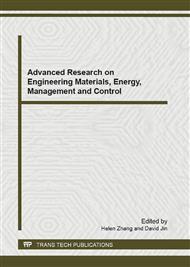p.420
p.424
p.430
p.435
p.439
p.445
p.448
p.452
p.464
Microscopic Numerical Simulation of Reinforced Concrete Damage Evolution under Uniaxial Tension and Compression
Abstract:
Based on the mesoscopic random aggregate model and brittle-damage constitutive model, the numerical simulations of tension and compression are performed on reinforced concrete, and the thickness method is employed to simulate the interface between steel bar and concrete. Then a series of samples are generated randomly based on Weibull distribution’ mechanical parameters, and these samples are used to investigate meso damage evolution process of reinforced concrete, as well as the impact of parameter selection on macro-strength characterization of reinforced concrete. The results of numerical simulations effectively reveal the accumulation of tensile damage of meso-units, which lead to the failure of reinforced concrete. In conclusion, this research provides an innovative method to investigate the mechanical properties of interface between steel bar and concrete.
Info:
Periodical:
Pages:
439-442
Citation:
Online since:
January 2012
Authors:
Price:
Сopyright:
© 2012 Trans Tech Publications Ltd. All Rights Reserved
Share:
Citation:


